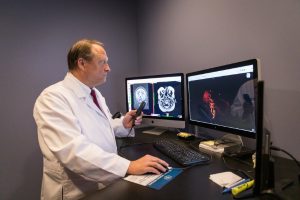Click below for answers to frequently asked questions.
Additional Important Questions
What are the Radiation Exposure Risks?
 Chesapeake Medical Imaging is committed to quality, accurate interpretations. Our machines are fully accredited by the American College of Radiology (ACR). The ACR sets very high standards to ensure that patients get a high quality exam that uses the lowest possible amount of radiation. As a result, we are actively involved in understanding and weighing the benefits and risk of our imaging procedures.
Chesapeake Medical Imaging is committed to quality, accurate interpretations. Our machines are fully accredited by the American College of Radiology (ACR). The ACR sets very high standards to ensure that patients get a high quality exam that uses the lowest possible amount of radiation. As a result, we are actively involved in understanding and weighing the benefits and risk of our imaging procedures.
Generally, radiation doses from imaging exams are relatively small and the clinical benefit of an exam far outweighs the risks. According to the Environmental Protection Agency, most people in the United States receive an annual radiation dose of about 360 millirem (used to measure radiation); 80% of that is from natural sources such as elevation, soil, rocks, radon gas, or plane trips. The descriptions below outline some common imaging procedures and the radiation risks associated with them.
MRI – Magnetic Resonance Imaging does NOT use radiation to image patients. There is no radiation risk involved in this study.
Ultrasound – Ultrasound does NOT use radiation to image patients. There is no radiation risk involved in this study.
X-ray – A mild dose of radiation is used to perform this study; chest x-ray is comparable to a cross country plane trip.
Mammogram – A mild dose or radiation is used to perform this study. The radiation risk is similar to the annual radioactivity naturally produced by the average person’s body.
CT – A Computed Tomography scan requires more radiation than an x-ray, however, it also provides a more detailed picture. The clinical benefit for diagnosis may outweigh the radiation risk; patients and their referring physician should consider the risks and benefits before proceeding with a CT study. Total radiation exposure varies greatly by procedure; a typical Chest CT is comparable to the radiation exposure from radon gas annually emitted in the average home.
PET – Positron Emission Tomography uses small amounts of radioactive materials which are injected and target the area of the body being pictured. The radiation risk varies by procedure.
Nuclear Medicine Scans – Nuclear medicine scans use small amounts of radioactive materials which are either injected, swallowed or inhaled to help target the area of the body being pictured and diagnosed. The radiation risks are like that of an x-ray.
What efforts has Chesapeake Medical Imaging put in place to limit radiation exposure?
Chesapeake Medical Imaging participates in rigorous programs and has taken several steps to ensure our patients receive only the necessary amounts of radiation needed to achieve a quality image to properly diagnose a patient. These steps include:
- All our radiologists and technologists are board-certified and have extensive training on techniques that minimize radiation exposure for patients.
- Our radiologists use the ACR Appropriateness Criteria so that the most appropriate imaging exam is prescribed in order to avoid unnecessary exposure. Recommending procedures that don’t use radiation when better for a specific condition.
- Our radiologists are actively involved in the ACR and the American Board of Radiology so that they can monitor new trends for radiation dosing and implement new standards and guidelines quickly when needed.
What steps does Chesapeake Medical Imaging take to ensure my privacy?
Chesapeake Medical Imaging takes every patient’s privacy very seriously. Our safety committee includes a HIPAA Compliance Officer who works with our sites/staff to ensure that all aspects of the HIPAA law is followed. All records are stored in password protected servers with software designed for our radiology practice. When you arrive for your appointment you will be asked to fill out confidential forms. On these forms you will be able to express how and with whom you wish to share your healthcare information. This keeps your information secure. You may change this information at any time. The written forms are shredded after the information is entered into your electronic chart. You may view our HIPAA Privacy Policy in the office at registration or contact us.
